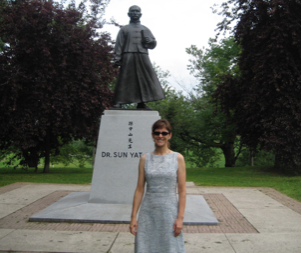Media Release
www.assiniboine.net
FOR IMMEDIATE RELEASE
Assiniboine to deliver new tuition-free, Ag Equipment Operator program
BRANDON, Man. (January 6, 2022) – Assiniboine Community College is announcing a new partnership
with the Congress of Aboriginal Peoples (CAP) to deliver a tuition-free Agriculture Equipment Operator
program to meet a labour market need.
The 14-week program starts February 2022 at the college’s North Hill campus in Brandon and is open to
Indigenous people living off-reserve.
“This partnership is an important step in helping to meet an industry need and in providing learners, who
may otherwise not have had the opportunity, with a chance to enrol in a program that offers a gateway
to great job potential,” said Kevin Poirier, Dean, School of Trades at Assiniboine. “I’m pleased to welcome
the support of CAP to help ensure that there are trained people who can step into areas of need so that
the growing agricultural sector can reach its full potential.”
The program, funded by CAP, will provide a foundation for students who wish to pursue careers in a
rapidly changing and dynamic agricultural sector focused on primary production.
“The Congress of Aboriginal Peoples’ Indigenous Skills and Employment Training (ISET) Program is a proud
sponsor of Assiniboine’s Agricultural Equipment Operator (AEO) Program. A key objective of the ISET
program is to provide skills training to off-reserve Indigenous people that address gaps in the labour
market,” said Sarah Mitchell, National Project Coordinator with CAP.
“Projected labour market shortages in this sector overall are significant, and CAP is happy to support an
industry that is in need of skilled workers. CAP wishes every client in the AEO program the best of luck
and a long and fulfilling career!”
The program begins with a one-week preparatory course and ends with an 80-hour paid work placement.
Students training with skilled staff from Assiniboine will learn safe farming practices and the operational skills necessary to manage multiple enterprises found on Canadian farms.
“Producers across Manitoba are facing serious labour challenges and struggle to hire employees with the
necessary skills to work on a farm,” said Keystone Agricultural Producers (KAP) president Bill Campbell.
“The Agricultural Equipment Operator program will train participants with the knowledge and skills
they need to be successful. KAP was pleased to help develop the program and provide industry input to
align the curriculum with agricultural labour needs.”
Students will have the opportunity to build ongoing industry contacts and meet potential employers as
they take part in the regular tours, workshops, and events held nearby commercial operations and
graduate with an industry-recognized credential.
“Removing the cost of training, a significant obstacle to employment, allows students to gain the skills
and knowledge required for entry into the job market, without worrying about funding,” said
Assiniboine’s Director, Indigenous Education, Kris Desjarlais. “With this, learners are free to focus on their
training in this hands-on learning environment.”
The program has capacity for 15 students. Those interested in enrolling must first attend a free program
information session as part of their admissions process into this program.
For more program details and to register for an info session, visit assiniboine.net/agequipTF.
About Assiniboine Community College
Assiniboine Community College has been providing exceptional learning experiences for 60 years and
offers certificate, diploma and post-graduate programs across a variety of disciplines, including culinary
arts and hospitality, business, agriculture and environment, health and human services, and trades and
technology. The college also delivers apprenticeship programming in a range of skilled trades disciplines.
With more than 3,600 students, and campuses in Brandon, Dauphin and Winnipeg, Assiniboine provides
comprehensive educational opportunities throughout Manitoba. The college also partners with many
communities and organizations across the province to deliver customized education and training.
Assiniboine’s annual provincial economic impact is $612 million.
Assiniboine Community College campuses are located on the traditional territories of Treaty No. 1 and
Treaty No. 2, the shared traditional lands of Cree, Oji-Cree, Dakota, Dene and Anishinabek/Ojibwe
peoples, and the homeland of the Métis Nation. We acknowledge their welcome to the students who
seek knowledge here.
For more information, please contact:
Anya McNabb
Communications Specialist
Assiniboine Community College
mcnabba@assiniboine.net
204.868.5453























